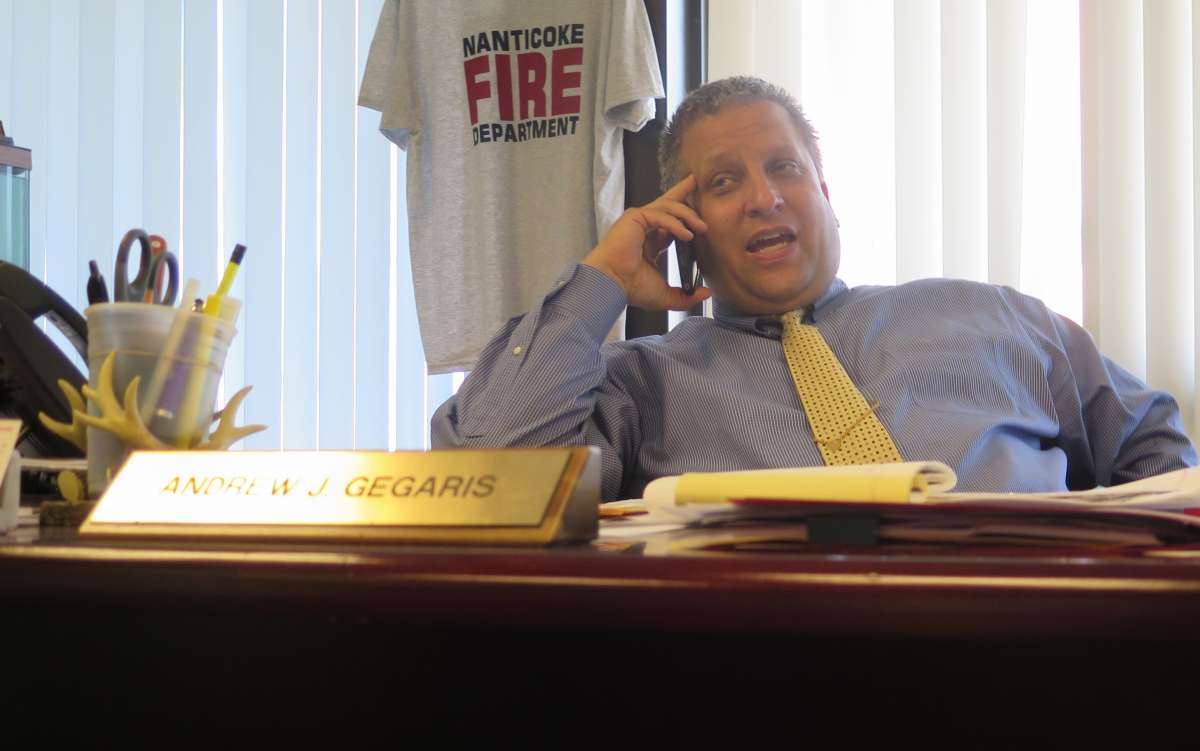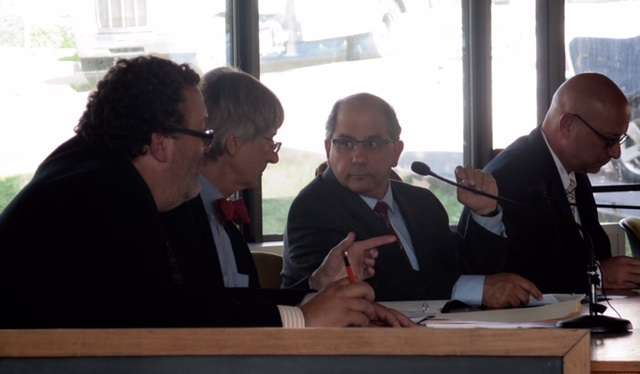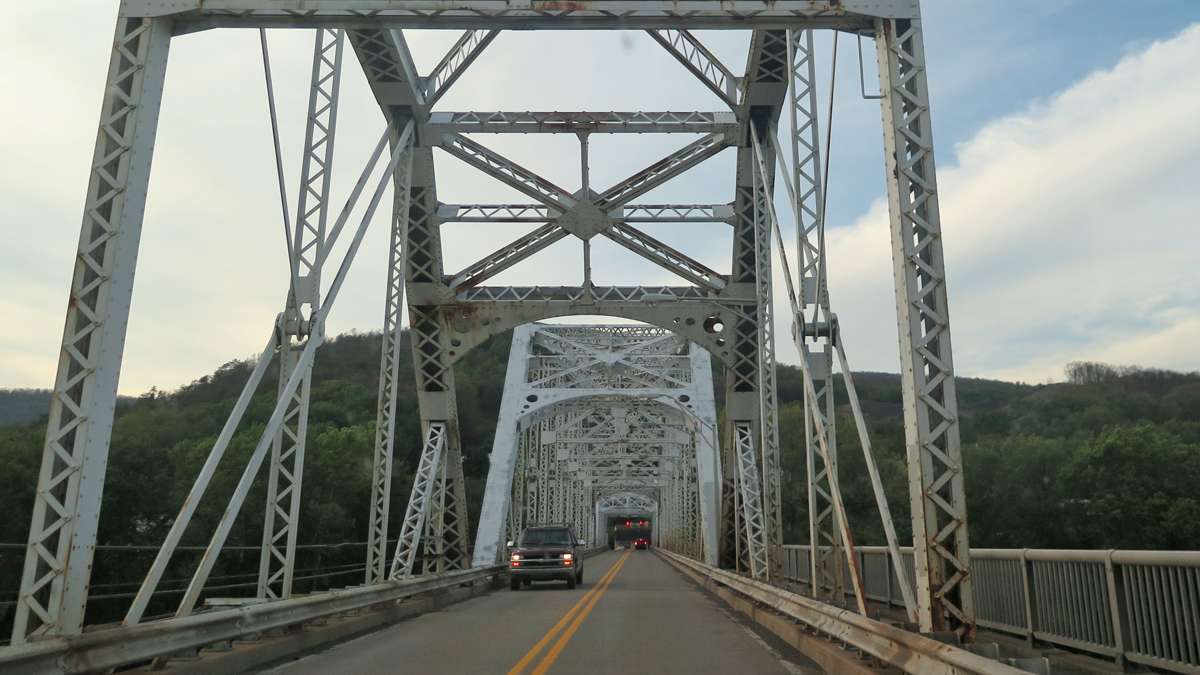Nanticoke’s new start: What other Pa. cities can learn from the first poised to exit distressed cities program
ListenThe accomplishment comes with caveats.
After nine years of state intervention, Nanticoke’s got a balanced budget, most debts paid off and a full complement of financial management staff in place.
But it all happened at the expense of taxpayers and required changing the city’s form of government.
A timely countywide property value reassessment — something out of Nanticoke’s direct control — was crucial, too.
And maintaining the newfound stability will require continued tax increases and keeping in place city management that until very recently was prone to a rapidly revolving door.
Coal to crisisNanticoke’s one of many small Pennsylvania cities borne of the coal industry and declining since that industry went bust decades ago.
The city’s long-precarious financial situation hit crisis point in 2006.
Local officials couldn’t borrow money fast enough to keep City Hall open. Or water running in the city’s public works building — you know, headquarters for the people tasked with the grittiest jobs involved in running a city, and routinely exposed to mud, sludge and chemicals.
Public Works Director Wally Pavelitz says that had been going on for three years when the city sought state intervention in its fiscal affairs.
Pavelitz and his staff were supposed to stay in a trailer only temporarily, while a new building was constructed. That never happened, which is unsurprising in retrospect given the city’s financial troubles.
So, I asked, what did you do then, in the meantime? What did you do if someone got chemicals in their eyes or something?
Pavelitz says that happens every now and again. He kept eyewash and a first aid kit on hand for the most serious exposures, to be followed by immediate transport to the hospital.
In less severe situations, workers could wash up at a nearby gas station, if the bathroom was free, or City Hall half a mile away, or go home.
Pavelitz’s department now uses the same home base as when he started nearlry four decades ago. While the building’s condition is passable, at best, it has a sink and bathroom — both fully functional, complete with running water.
But there still are challenges, Pavelitz and other officials are quick to acknowledge.
“We actually have around, eh, 38 miles of road, approximately. When I first started working in the late ‘70s, the street department was actually 18 employees. We’re down to four,” he said.
Councilwoman Lesley Butczynski said last week hiring two public works staffers is imminent.
But for now, Pavelitz operates with a skeleton crew at times down to just him and one other guy if, for example, someone’s on vacation and another calls out sick.
So the progress on fixing potholes is going slowly.
“Our infrastructure took a beating with this past winter. I want to do a lot of hot asphalt patching. But with the crew I got, it’s pretty much impossible,” Pavelitz said.
It’s common in cities withering without the single sector responsible for their existence:
A thinning workforce and decaying infrastructure.
Declining, aging populations are typical, too.
Nanticoke’s been losing 18-to-65-year-olds, described as “prime workforce” in the city’s Act 47 documents, while gaining those older than 65.
The number of residents also has been dropping since 1930, when it peaked at 26,000 in 1930.
At last count, it was 10,300.
The city’s Act 47 coordinator Joe Boyle says these are some factors working against places like Nanticoke.
They also help explain when the Commonwealth’s program for distressed municipalities has worked (which isn’t all that often), it’s happened in five townships and four boroughs – but no cities.
“Most of the cities are older, smaller, poorer,” Boyle said recently. “When you’ve got an ingrained level of service you provide for an area — typically it’s full-time police, full-time fire, public works, code. And if you’ve been providing that for a level of thirty thousand, as Nanticoke was, now you’re down to ten thousand people. If you’re still trying to support that level of service, it gets very difficult.”
Boyle spoke after a public hearing about Nanticoke’s potential exit from Act 47. That was June 22. The state Department of Community & Economic Development has as long as three months to decide whether they agree the city can stand on its own.
If Nanticoke does, in fact, make history, it comes at a cost to taxpayers
When Boyle arrived, Nanticoke’s distress signals included the fact that the city was taking in $411,000 per year in property tax revenue.
“How can you run a city on that? You can’t,” Boyle said.
The low figure wasn’t because people aren’t paying their taxes, as the collection rate’s nearly 90 percent.
But three-quarters of Nanticoke homeowners were paying less than two hundred dollars a year in property taxes. That’s because their homes assessed values hadn’t been updated since 1965.
In Pennsylvania, counties don’t have to do updates with any regularity. And state law caps property tax rates for cities like Nanticoke.
So once they hit that ceiling, property tax revenue stagnates.
When Luzerne County finally reassessed in 2009, it really helped Nanticoke, according to Pennsylvania Economy League Central Region Executive Director Gerry Cross. (Boyle also works for the Pennsylvania Economy League Central, which the state often hires to work with distressed municipalities).
Cross stressed that the reassessment wasn’t enough, though.
The city also restructured its government by going home rule. That permits higher local taxes than state law allows otherwise, but voters must agree to make the switch be approved by voters.
Getting the majority of the electorate to agree to higher taxes seems like an impossible task, but Nanticoke isn’t the only place to do it in recent years. There’s Altoona, another Act 47 city. And Carlisle, which is not distressed.
Politics does deter officials elsewhere from even trying for that, though, Boyle said.
Like West Hazelton, another Luzerne County community where he oversaw Act 47. The borough exited last year, but already is thinking about getting help from the state again.
“These guys are concerned about their political status. Although given everything that exists in the political culture in West Hazelton, I would seriously doubt that home rule would change anything,” Boyle said.
State law requires home rule charters to specify a limit for local revenue increases – property, earned income and other taxes and revenue sources like fines and fees – of no more than 10 percent a year.
It’s 8 percent in Nanticoke.
For a median-income household assessed at the city’s median property value, the new expenses add up to $563 per year, which works out to 2.5 percent of earnings.
Taxpayers are generating an extra $2 million per year for the local government. That’s already more than a third of the $5.3 million budget.
But the city will keep raising taxes, at least a little, to keep future budgets balanced while saving for emergencies (which it didn’t used to) and do some badly-needed, long-procrastinated infrastructure projects.
“It’s definitely overwhelming, and I’ve been a single mom for years,” said Councilwoman Lesley Butczynski. “We try very hard not to have any more possible raises. But with the world today and all the increases, a lot of times there’s nothing you really can about it.”
So what else can other cities learn?
“One of the things you learn from Nanticoke, is to follow the plan,” Boyle said. Cities don’t always do that.
Take the city of Chester. It got into Act 47 25 years ago, has since started getting $10 million a year from Harrah’s casino, still cannot balance its budget and continues automatic 4.5 percent raises every year for city hall unions.
So, union concessions are key, too. Revenue projections in Nanticoke’s exit plan also assume 2 percent raises, at most, for all city hall workers during the next five years. The city also got some concessions from police and firefighters. They now pay for their health care – between $750 and $1500 each per year, depending – and new hires won’t get health coverage during retirement like their predecessors.
Also, counties need to reassess property values more frequently so they’re not artificially depressed.
And going home rule is a way around the state limits on local taxes.
But the bottom line, according to Cross?
“The lesson is: you don’t continue doing business as usual and get out of Act 47,” Cross said.
The thing is, business as usual in Nanticoke meant living there was cheap. It costs more now.
But the reality of the situation is, now the money’s going to stabilize city finances and maintain services – not enhance them for the people paying more.
At least not anytime soon.
WHYY is your source for fact-based, in-depth journalism and information. As a nonprofit organization, we rely on financial support from readers like you. Please give today.








